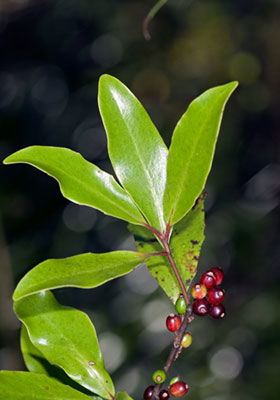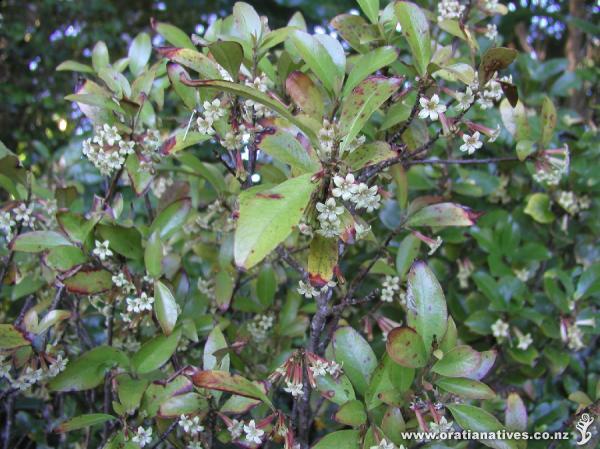Toropapa – A Fragrant Forest Gem
Toropapa (also known as karapapa) is currently putting on a quiet show in the ngahere, with vivid red berries catching the light beneath the forest canopy - and in some spots, early flowers beginning to bloom. This native shrub, usually hidden among the undergrowth, is best known for the sweet, perfume-like scent its trumpet-shaped flowers release from late autumn through to late spring.
The flowers range in colour from white through pink to deep red, adding to their visual charm when they appear. Three species are found on Aotea: Alseuosmia macrophylla, A. quercifolia, and A. banksii. All thrive in cool, shaded environments under the forest canopy, often blending so well with their surroundings that they’re easy to miss.
Toropapa is also known for its highly variable leaf shapes, even among plants in the same population. This has made it difficult for botanists to clearly define how many distinct species exist, prompting ongoing research—including work by Te Papa scientists—to better understand this puzzling genus. Interestingly, it has been proposed that toropapa’s diverse leaf forms might not just be a botanical curiosity, but a survival strategy. Some researchers suggest that toropapa may mimic less palatable or tougher native plants as a form of protective mimicry to avoid being eaten by browsing animals. While this theory is still being studied, it highlights the complex and adaptive nature of our native flora.
Though not officially threatened, toropapa remains vulnerable to animal browsing and habitat disruption. With its delicate scent, ecological significance, and scientific intrigue, toropapa is a native treasure well worth keeping an eye—and a nose—out for.
References:
- New Zealand Plant Conservation Network. Alseuosmia macrophylla. https://www.nzpcn.org.nz/flora/species/alseuosmia-macrophylla/
- Oratia Native Plant Nursery. Alseuosmia.
- http://www.oratianatives.co.nz/catalogue_extras.php?article_id=82
- Aotea Great Barrier Environmental Trust. Toropapa – Hidden in the Forest. https://www.gbiet.org/en47-toropapa-hidden-in-the-forest
- Te Papa Blog. How many species of the confusing shrub toropapa are disguised in the bush?https://blog.tepapa.govt.nz/2018/05/14/how-many-species-of-the-confusing-shrub-toropapa-are-disguised-in-the-bush/

